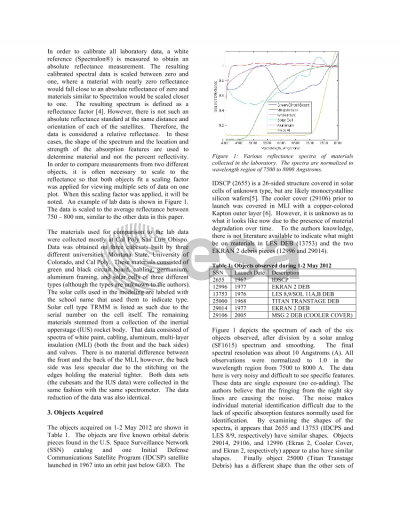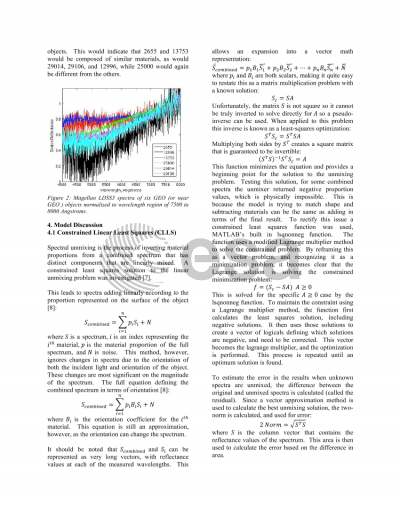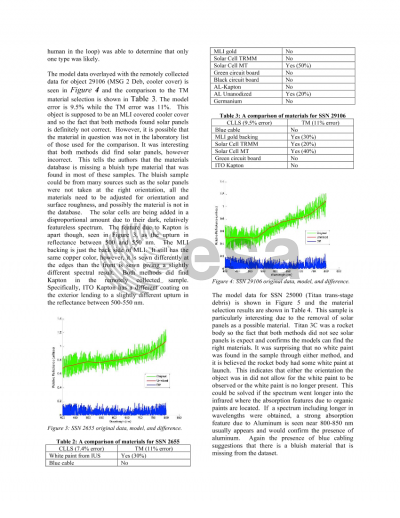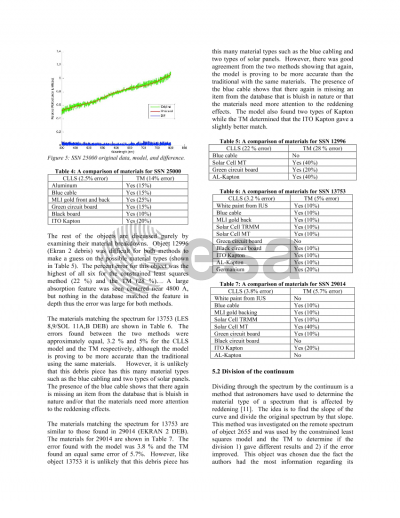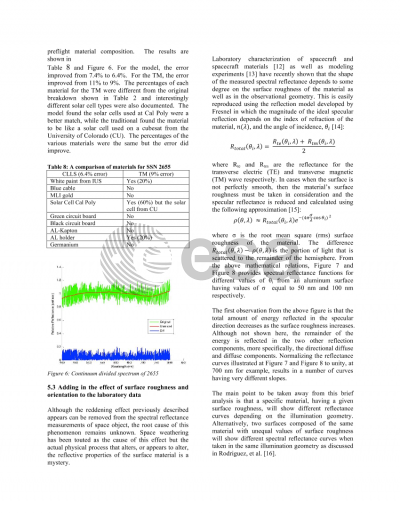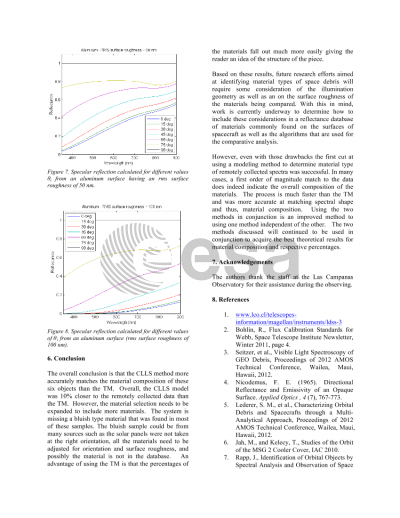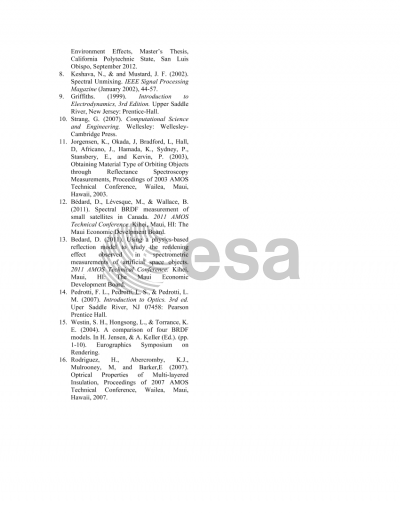Document details

Abstract
Visible Spectral reflectance data was collected at Las Campanas Observatory * using an imaging spectrograph. Five pieces of Geosynchronous Orbit (GEO) were identified and observed. In addition, laboratory spectral reflectance data was collected on several typical common spacecraft materials. The remotely collected data and the laboratory acquired data were incorporated in a model that uses a constrained linear least squares method (CLLS) to unmix the spectrum in specific material components. The results of this model are compared to the previous method of a human-in-the-loop (traditional method (TM)), which identifies possible material components by visual inspection. The CLLS method was in general more accurate at determining the materials, while the TM was able to determine the percentages of the materials in the spectrum.
Preview

